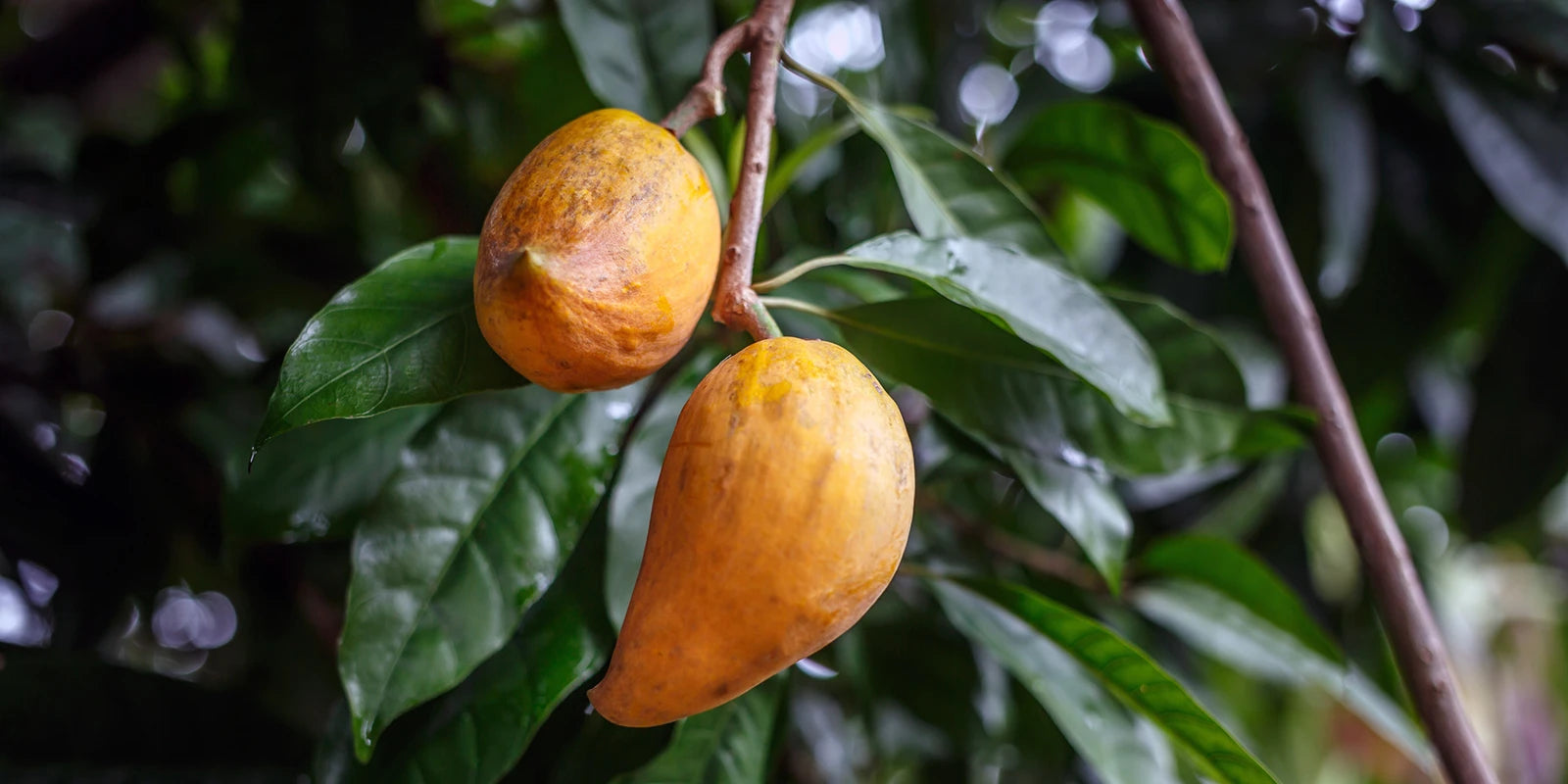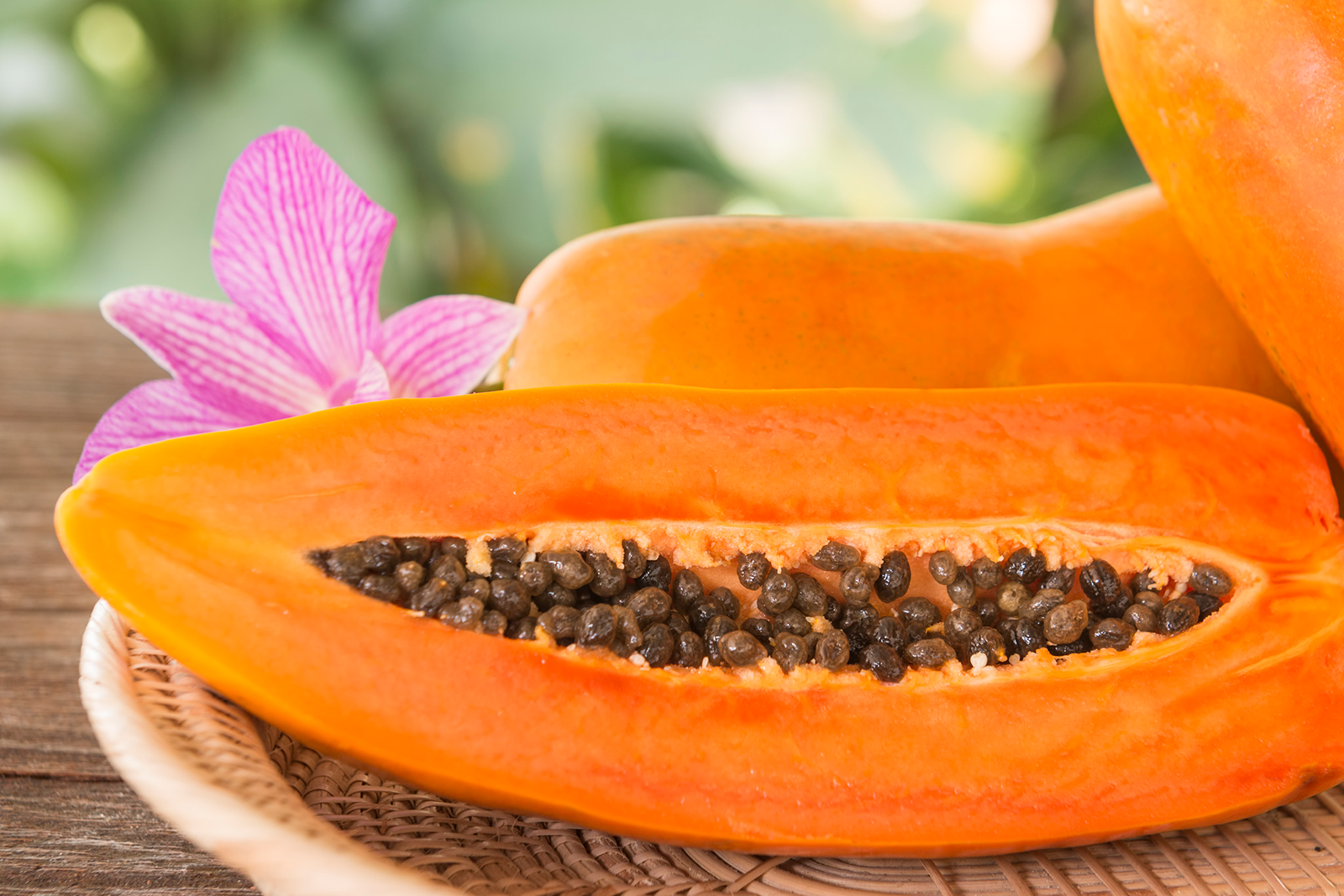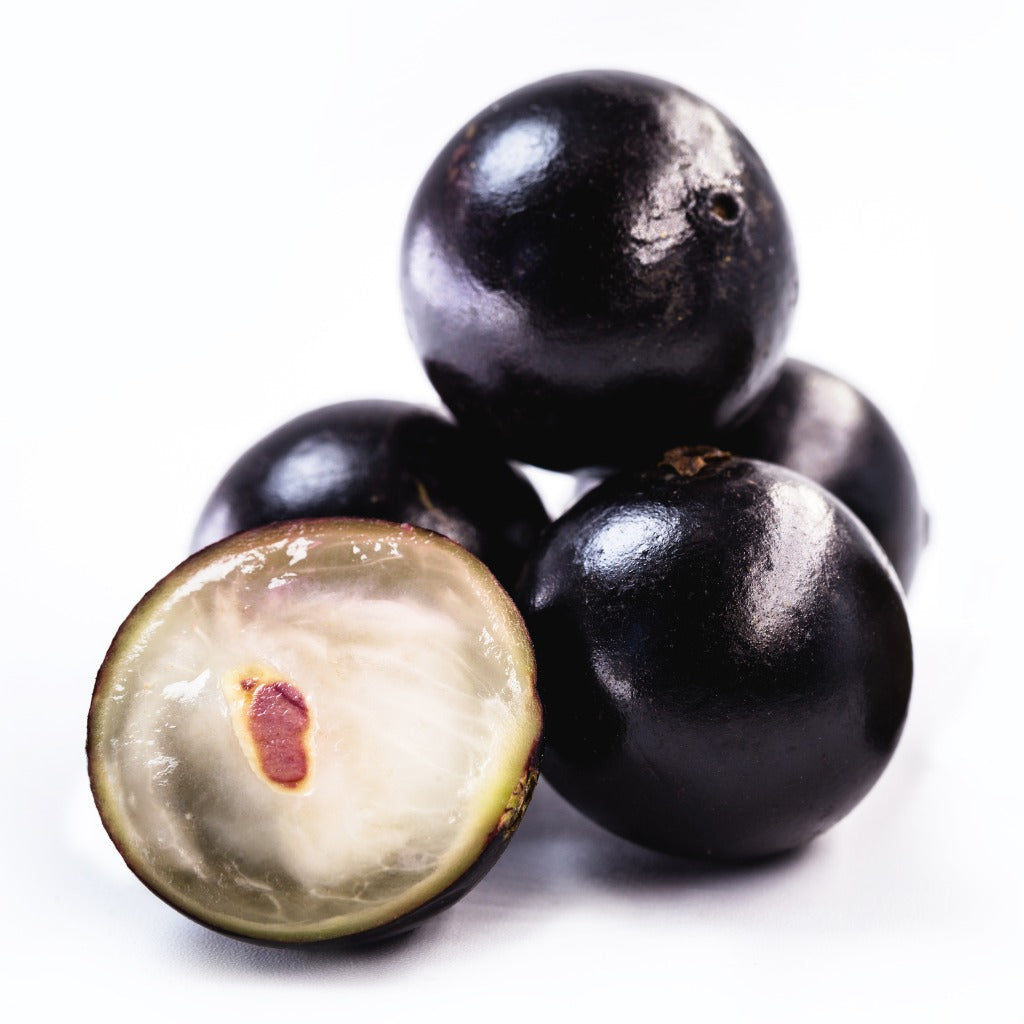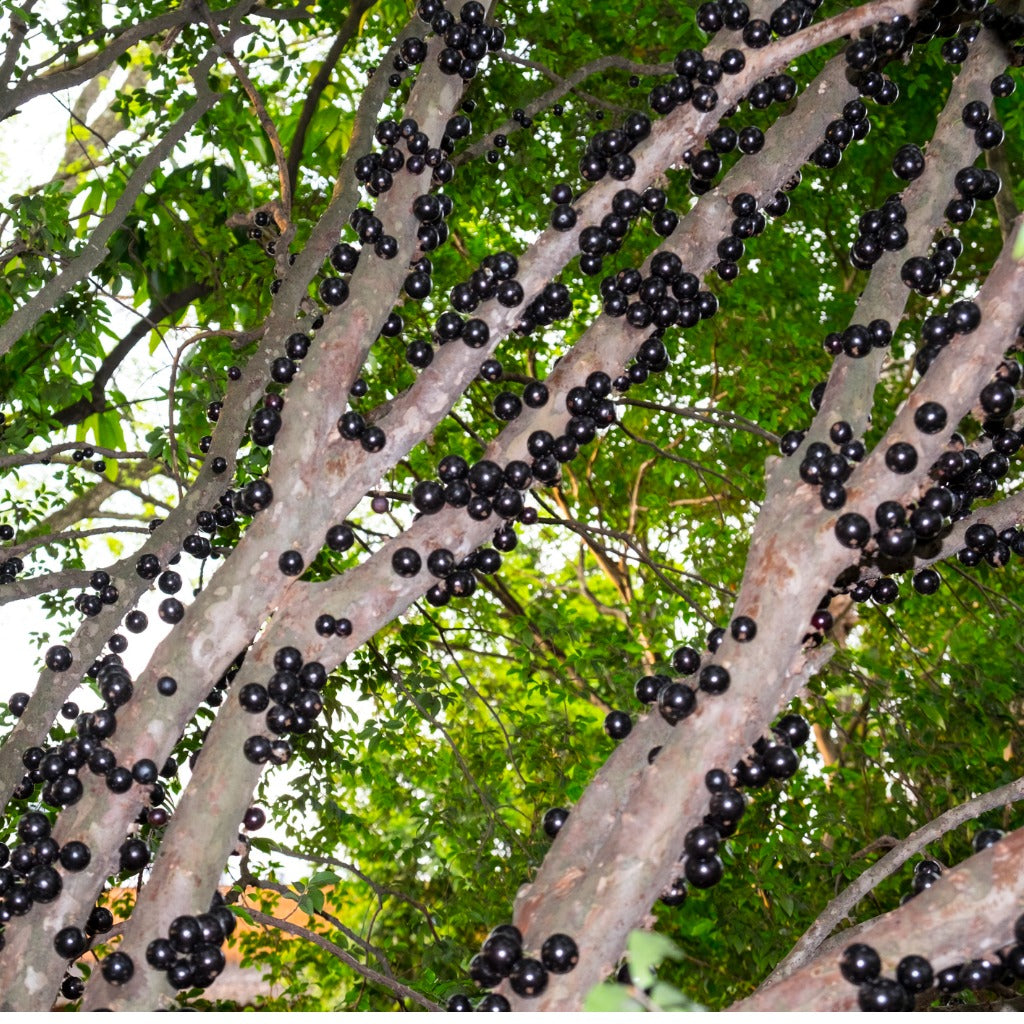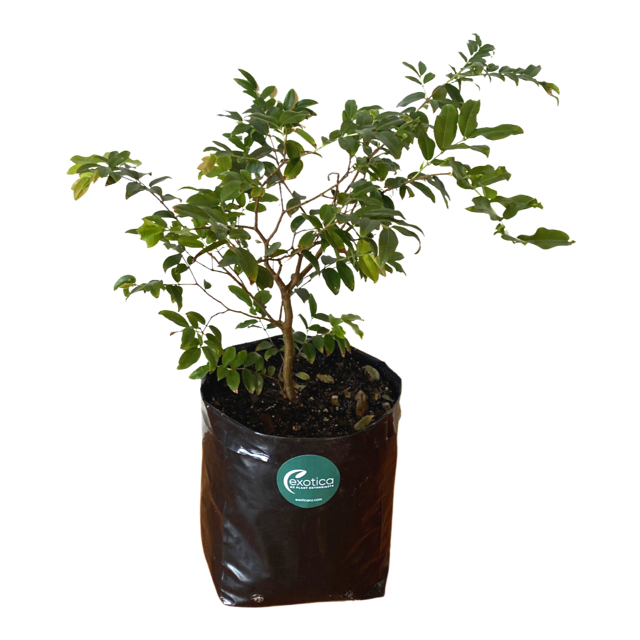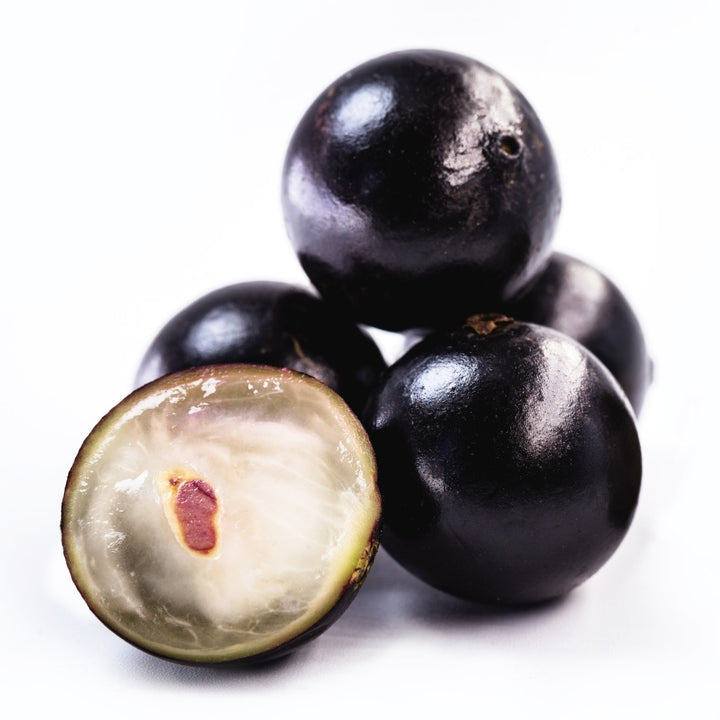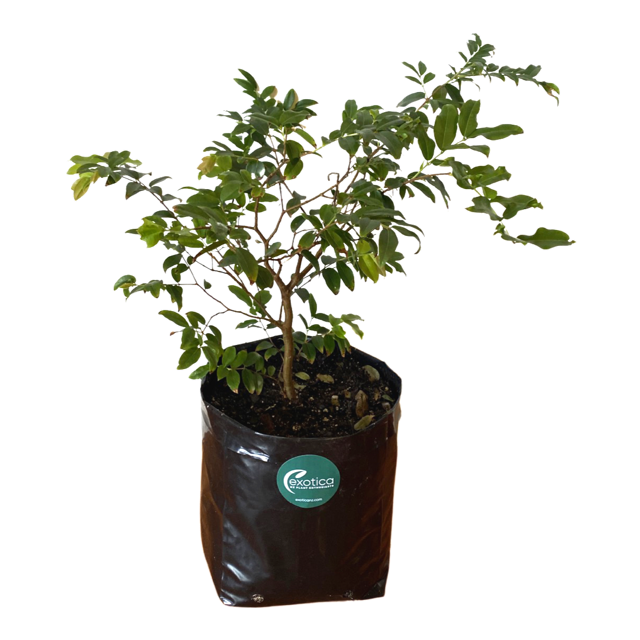Jaboticaba Sabara Plant- Matured & Large
Jaboticaba Sabara (Plinia cauliflora)
Jaboticaba is the Brazilian term for four very similar species of Plinia that produce one of the more interesting-looking tropical fruit trees in the upper North of New Zealand.
The name of the best-known of those species, Plinia cauliflora, suggests why: It is cauliflorous, meaning that its flowers and fruit are borne directly on the woody stems and trunk of the tree. Jaboticaba is native to southeastern Brazil, as well as parts of Paraguay, Bolivia, and Argentina and, because of that southerly origin, mature specimens can tolerate periods of brief light frost. It grows very slowly depending on the species.
The trees are profusely branched, beginning close to the ground and slanting upward and outward so that the dense, rounded crown may attain an ultimate spread as wide as it is tall. The thin, beige to reddish bark flakes off much like that of the guava.
The Jaboticaba makes an attractive landscape plant. It has a grape-like appearance, but contains just 1-4 large seeds. The gelatinous flesh is white to pink, and its flavour ranges from sweet to sub-acid.
If given full sun and proper fertilisation, ‘Sabara’ usually fruits in 6+ years whereas the standard Jaboticaba can take up to 10 years to fruit. Best of all ‘Sabara’ has 3 to 4 cycles of flowers and fruit each year. The shiny black fruit develops in clusters close to the woody stems and has a sweet pulp under the skin.
Plant is 6+ years
Plant Care
- Soil: Prefers slightly acidic soil (pH between 5.5 and 6.5), well-draining, and rich in organic matter.
- Watering: Keep the soil consistently moist but not soggy. More frequent watering may be necessary during fruit development.
- Temperature: Best in warm climates, ideally between 18°C and 25°C. Sensitive to frost.
- Light: Full sun to partial shade.
- Fertilising: Use a balanced NPK fertilizer such as 10-10-10 every two months during the active growth season.
- Pruning: Prune to maintain shape and encourage branching. Jaboticaba trees fruit on old growth, so pruning should be minimal.
- Mulching: Apply organic mulch to retain soil moisture and regulate soil temperature.
- Pest Control: Relatively pest-resistant but monitor for signs of scale or fungal diseases, especially in humid conditions.
- Flowering and Fruiting: Flowers and fruits several times a year if conditions are favorable, with the fruit growing directly on the trunk and branches.
- Potting: Can be container-grown but requires large pots to accommodate the extensive root system. Ensure frequent watering and nutrient replenishment.
- Feeding Regime: Regular application of a balanced fertilizer during the growing season supports both growth and fruiting.
We ship our plants and garden supplies throughout New Zealand. Due to the increased costs of shipping and packaging, we now apply a delivery charge. After offering free shipping for three consecutive years, we find it necessary to adjust this policy to align with current market conditions. However, we have lowered our prices to help offset this change.
Please note, we do not ship plants or garden supplies internationally from New Zealand. We do export plants and tissue culture materials from our overseas nursery, which requires a minimum order. Please contact us at hello@exoticanz.com to discuss your specific requirements.
Shipping (plants) from:
North Island Urban $25
North Island Rural $35
South Island Urban $25
South Island Rural $35
Shipping Garden Supplies:
North Island Urban $20
North Island Rural $25
South Island Urban $35
South Island Rural $45
Delivery
- Our plants are available for shipment from September to April, depending on stock levels. Typical delivery times range from 5 to 7 business days, although they can take up to 10 business days depending on the destination.
- We take extra care in packaging; most of our plants are secured in bespoke inserts and shipped in individual boxes to ensure they arrive undamaged.
- Deliveries are scheduled once a fortnight, typically on Monday. If you place your order over the weekend, we aim to dispatch your plants on the following Monday. This scheduling allows our team to prepare your order thoroughly and ensures the courier has sufficient time to deliver your plants safely, avoiding any unnecessary delays over the weekend.
- All orders are shipped via courier track and trace service (not signature required)
- We cannot deliver to PO Box addresses.
- If you have a rural address, please contact us beforehand to discuss the best delivery options and avoid any potential issues.
Additional Delivery Information
- Most plants are shipped with soil. During the cooler months, we closely monitor weather conditions and may temporarily delay shipments if the weather is particularly severe. Our packing process includes adding insulation when necessary to protect the plants against temperature extremes.
- In summer, we ensure that plants are thoroughly watered before they leave our nursery. Occasionally, we may need to ship plants bare-rooted, particularly when they cannot be comfortably re-potted into smaller packaging for shipping. We will always discuss this with you in advance if your plant needs to be shipped in this manner.
- It's important to note that shipping can be a stressful experience for plants, often due to spending several days in a dark, confined space. While most plants withstand this with little to no stress, some may experience leaf drop. However, they generally recover quickly with some additional care, including proper watering and gradual reintroduction to light after arrival.





